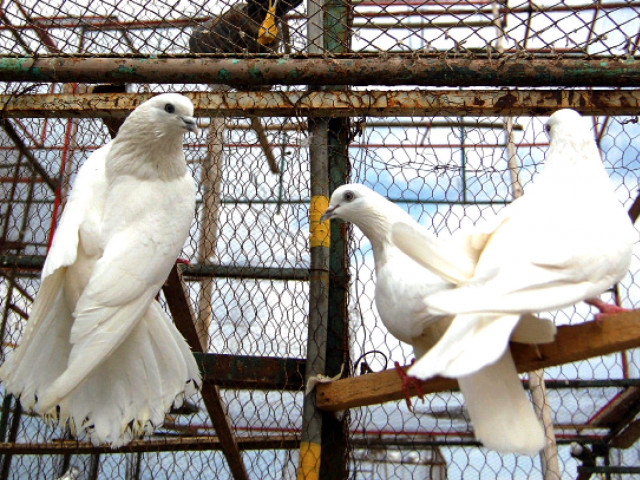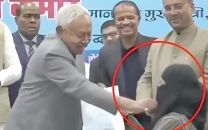Once just limited to betting, kabootar baazi finds a new lifeline
Two competitions are held every year, in May and October.

Once just limited to betting, kabootar baazi finds a new lifeline
Pigeons remind one of days gone by, when the birds were used to send messages across great distances. The advent of postal services and later phones, text messaging and the internet replaced the pigeon services and people moved on.
But the pigeons have found new popularity among those who wanted to watch the beautiful bird fly high and handsome. “Kabootar bazi”, a form of pigeon endurance race, remains a popular spectator sport, and is even being performed at championships.
All competitors release their pigeons in the air simultaneously, the winner being the pigeon that stays airborne the longest.
“Sometimes they stay in flight for over 10 hours,” said Mirza Mehmood, the man who floated the idea of a kabootar bazi competition in Rawalpindi and Islamabad in 2008 to eliminate illegal betting on such events and to promote the sport.
Mehmood, who owns a huge collection of active and retired racing pigeons, said the competition has become popular in the four years that it has been held.
Every year two competitions are held. The first competition is held between May and June and the second between September and October.
The entry fee for the most recent competition was set at Rs5,000. About 100 pigeons entered the fall season’s competition, Mehmood said.
He said there was a time when people did not give much respect to kabootar bazi and it was confined to people notorious for high-stakes betting. “I have seen people who lost everything, all their property, all their money, when they bet,” he added.
Imran, who did not want to provide his full name, said he used to bet on pigeons. “Four year back, I lost more than Rs500,000 to kabootar bazi,” he claimed.
But the tournament has changed people’s approach towards the sport: people who used to bet now participate in the competition for prizes instead.
In the tournament, the first prize is a Suzuki Mehran, second is a Honda CG-125 motorcycle, the third a Honda CD-70 motorcycle, with cash prizes from Rs50,000 to Rs10,000 for other winners, said Mehmood.
Chaudhry Adil, who recently won a prize of Rs50,000 in the competition, said he has over 500 pigeons at home in Chak Shahzad. “My pigeons stayed in the air for almost eight hours against competitors who flew for only seven hours.”
He said that he trained them by making them fly for five to six hours in daily practice sessions.
Numan Kayani, a resident of Chak Shahzad, who won a Mehran in the competition held last June, told The Express Tribune that it is good sign that kabootar bazi has become a sport in which many people are participating. “My pigeons stayed in the air for almost ten hours to win first position,” he added.
Some breeds are better
Ustad Zafar and Ustad Barkat are Rawalpindi-based pigeon-breeding experts. They believe that breed plays a vital role in the competition. According to them, the two most popular pigeon breeds used for kabootar bazi are Kusari and Sialkot.
“Both breeds are high flying, and Kusari are very intelligent birds. They can fly for 12 to 15 hours without a break,” said Barkat. “It’s impossible that a Kasuri pigeon will lose its way back home,” he added.
He said the two breeds are such that when they see other pigeons flying high, they are motivated to fly even higher.
Feeding the pigeons
Feed is the most important factor for any bird’s training, according to Barkat. Their feed includes wheat, almonds and spices such as saffron and turmeric. Beside their feed, it is critical to look after the pigeons’ heath and properly vaccinate them so they do not fall victim to preventable diseases.
Mating pairs for better performance
Barkat believes that the qualities of a pigeon’s lineage plays an important role in the pigeon’s flying performance. He has his “own technique” to match a pair for optimum breeding. He said if the female pigeon is large, the male needs to be smaller and vice versa, but their wing spans should always match.
Published in The Express Tribune, November 11th, 2012.



















COMMENTS
Comments are moderated and generally will be posted if they are on-topic and not abusive.
For more information, please see our Comments FAQ